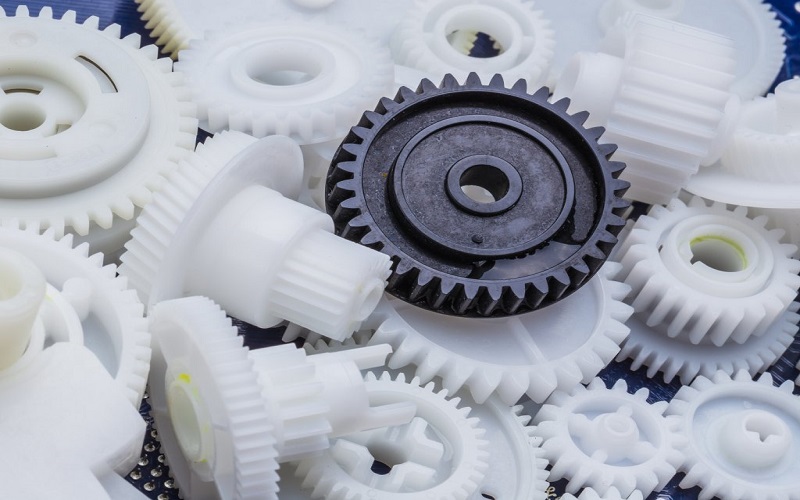When choosing technical plastics, it is important to understand the properties of the material. Delrin and PEEK are two common engineering plastics that each have unique advantages. Delrin is known for its high strength, stiffness and low friction and is widely used in areas such as automotive parts and medical equipment.
PEEK is a high-performance plastic known for its excellent resistance to high temperatures and chemicals, making it suitable for use in aerospace, oil wells and medical implants.
This article compares the performance of Delrin and PEEK, focusing on strength, chemical resistance, and high temperature resistance, to give you the optimal choice for construction and manufacturing and help you find the best material for your needs.
What Is Delrin?
Delrin is an engineering plastic manufactured by DuPont and scientifically called polyoxymethylene (POM). It is a highly crystalline plastic popular for its strength, stiffness and low friction. Delrin has excellent dimensional stability, wear resistance and is ideal for precision parts requiring durability.
It can be made by injection molding or extrusion molding and can be made in different colors. Key advantages include high tensile strength, resistance to deformation and resistance to fatigue.
Delrin is widely used in automotive parts, medical equipment, and electronic housings to make parts thinner and lighter, reducing production time and cost.
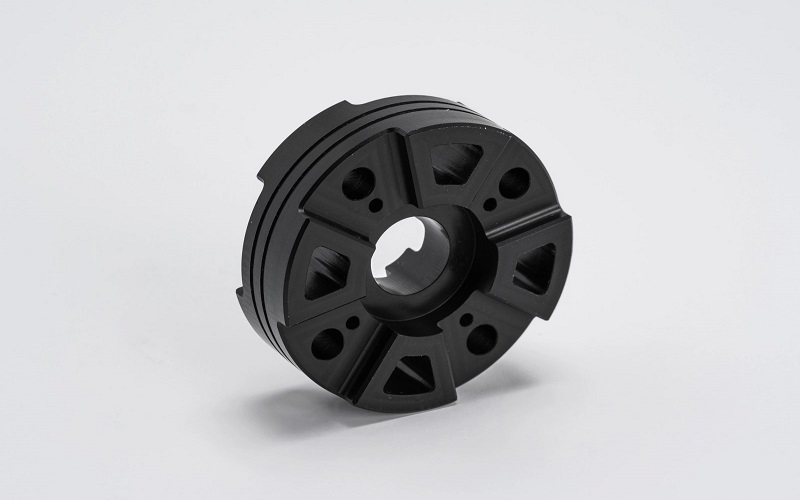
What Is PEEK?
PEEK (Polyether Ether Ketone) is a high-performance plastic that is particularly resistant to high temperatures and chemical corrosion. It is stable without deformation even at extreme temperatures up to 260 degrees Celsius.
In addition to high temperature resistance, it has excellent wear, corrosion and radiation resistance, and has very little smoke or toxicity in the event of a fire. PEEK can be processed in a variety of ways, including injection molding, melt forming, and laser sintering, and is widely used in a variety of fields.
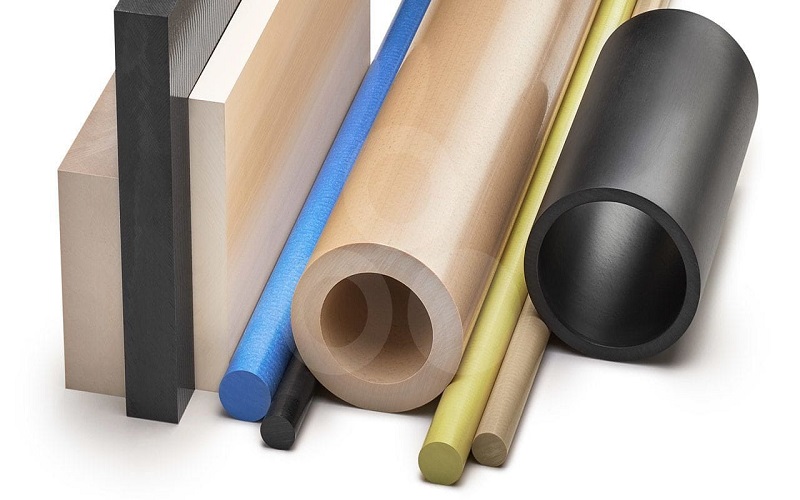
Delrin vs PEEK: Physical Properties
| Characteristic | Delrin | PEEK |
| Tensile Strength (MPa) | 65-70 | 90-100 |
| Flexural Modulus (GPa) | 2.8 | 3.6 |
| Coefficient of Friction | 0.2-0.35 | 0.3-0.4 |
| Maximum Continuous Use Temperature (℃) | 90 | 250 |
| Chemical Resistance (pH Range) | 4-10 | 0-14 |
| Density (g/cm³) | 1.41 | 1.30 |
| Elongation at Break (%) | 15-75 | 20 |
| Water Absorption (%) | 0.2 | 0.5 |
| Dielectric Strength (kV/mm) | 12 | 20 |
| Flammability Rating (UL94) | HB | V-0 |
Based on the characteristics comparison above, it can be observed that Delrin is suitable for low friction, low water absorption, and moderate temperature environments, while PEEK excels in high strength, high-temperature resistance, and flame retardancy.
Delrin vs PEEK: Applications And Uses
Both Delrin and PEEK have unique advantages in each application.
Delrin is a high-strength engineering plastic commonly used in automotive components such as fuel systems, door locks and control systems. Its low friction and high strength makes it excellent for these applications.
In the medical field, Delrin is often used to make syringes, surgical instruments, and medical equipment cases due to its precision and chemical resistance. Due to its durability and comfort, it is also used in consumer products such as watch straps, zippers and sporting goods.
PEEK is a high-performance plastic that is particularly suitable for aerospace applications. Because of its high strength and low weight, it is ideal for aircraft structures, engine parts and insulating materials.
In the oil and gas industry, PEEK’s chemical resistance and mechanical strength make it ideal for drilling tools, seals and valve seats.
It is also widely used in medical implants such as artificial joints, spinal implants and dental implants due to its biocompatibility and strength. This example shows that Delrin and PEEK excel in their respective fields.
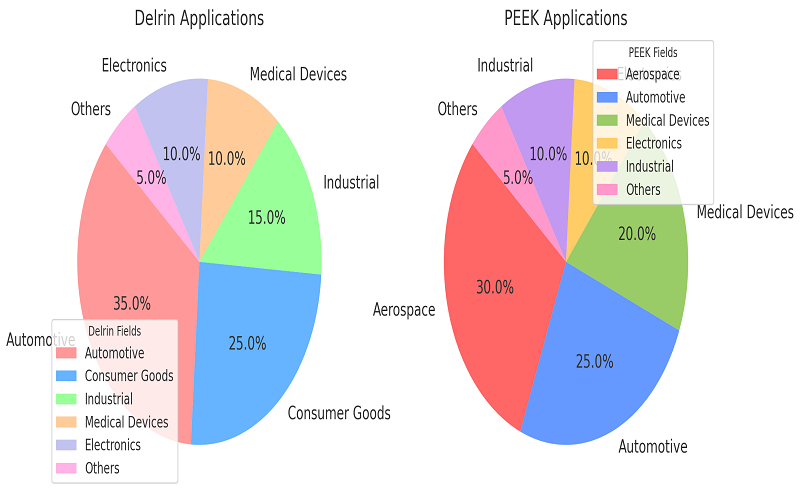
Delrin vs PEEK: Recyclability And Sustainability
Though Delrin and PEEK can be recycled, practical challenges exist.
- Recycling Delrin
Delrin can be mechanically recycled with shredders or recycling machines, but this method is not as widespread and less efficient than polypropylene (PP) or polyethylene terephthalate (PET). Recycling rates are low because there are few dedicated recycling facilities.
In addition, burning delrin produces toxic formaldehyde gas, so extra care must be taken when handling it. Delrin has little impact on the environment, but its longevity reduces the need for replacement and reduces waste. However, from an economic point of view, recycling Delrin is not necessarily cost-effective.
- Recycling PEEK
PEEK is a recyclable, high-performance plastic, but the process is complex and expensive. Recycling PEEK requires special equipment because it requires special chemical methods to break down PEEK into its basic components and then resynthesize it.
The high performance of PEEK makes it possible to replace metals, which not only reduces the impact on the environment, but also reduces energy consumption.
In contrast, Delrin recycling is possible but has limitations in efficiency and safety. Although Delrin’s recycling process is not as complex as PEEK, it still presents challenges.
As recycling technologies continue to improve, the environmental potential of these two materials will gradually increase in the future.
Delrin vs PEEK: A Performance Comparison
1.Mechanical Strength
Delrin is characterized by a very strong mechanical strength and stiffness, making it well suited for heavy duty applications, like automotive parts.
PEEK is considered mechanically strong, has exceptional properties under high loads, and is often deployed in extreme environments, such as aerospace and oil wells.
As you can see, Delrin is suitable for medium duty applications, while PEEK has a distinct advantage in terms of applications requiring higher mechanical properties and environmental performance.
2.Dimensional Stability
Delrin has very good dimensional stability over time and over temperature changes, and is therefore a great choice for precision machining.
PEEK has even higher dimensional stability, especially when it comes to high temperature and high pressure conditions.
Thus, PEKK is often an excellent choice for “extreme” environments.
3.Biocompatibility
Delrin has high biocompatibility levels and is commonly utilized for disposable housings for medical devices and equipment.
On the other hand, PEEK is considered to have excellent levels of biocompatibility and has been widely used and implanted in the body for years as it relates to long-term implants (for example, artificial joints).
Thus, PEEK is an excellent choice for applications in areas requiring high levels of biocompatibility relevant to advanced biocompatibility applications.
4.Chemical Resistance
Delrin has great resistance to most chemicals; however, it is not particularly resistant to strong acids or strong bases.
PEEK has both a high degree of chemical resistance and can be reacted to a variety of strong acids and strong bases.
PEEK also maintains good performance even at elevated temperatures, thus making it an excellent choice in harsh chemical environments.
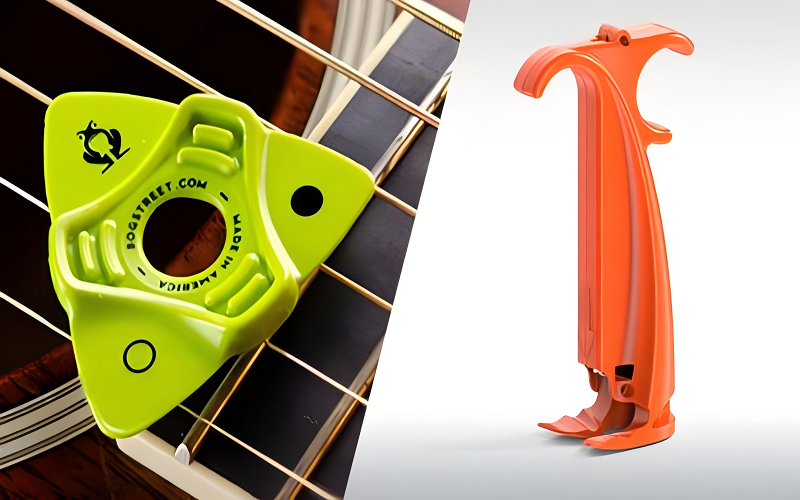
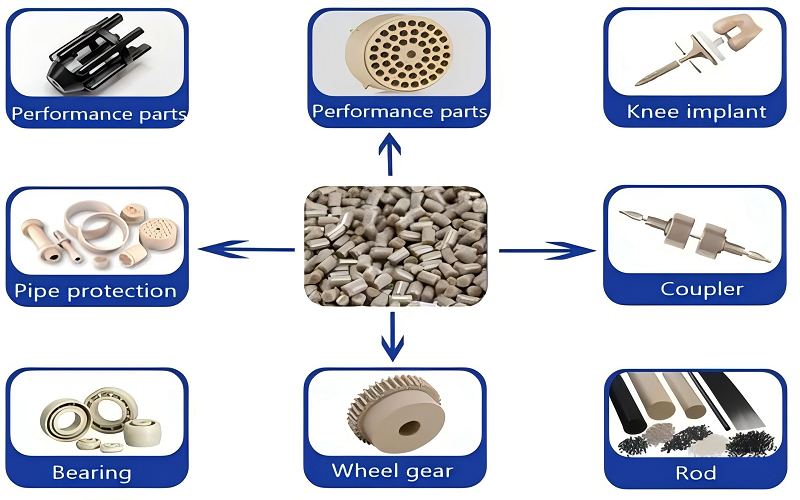
Summary
This article compares Delrin and PEEK and explains their key properties and uses. Due to its durability and low friction, Delrin is ideal for use in automotive parts and medical equipment. PEEK, on the other hand, is excellent for aerospace and industrial applications, especially in extreme conditions.
If you need further information and professional advice regarding this material, do not hesitate to contact us. We respond to the project needs of our customers.
FAQs
Which Is More Chemically Resistant, Delrin Or PEEK?
PEEK has superior chemical resistance compared to Delrin.
Delrin works well with many common chemicals, such as fuels, greases and solvents, but has bad resistance to corrosives, such as strong acids and strong alkalis, which can readily damage it.
PEEK has excellent chemical resistance and can withstand almost every common chemical, such as strong acids, strong bases, and organic solvents. PEEK will hold up in high temperatures and will not corrode.
This makes PEEK a better material option in applications where corrosion is a likely scenario, such as with chemical processing or high-performance medical devices.
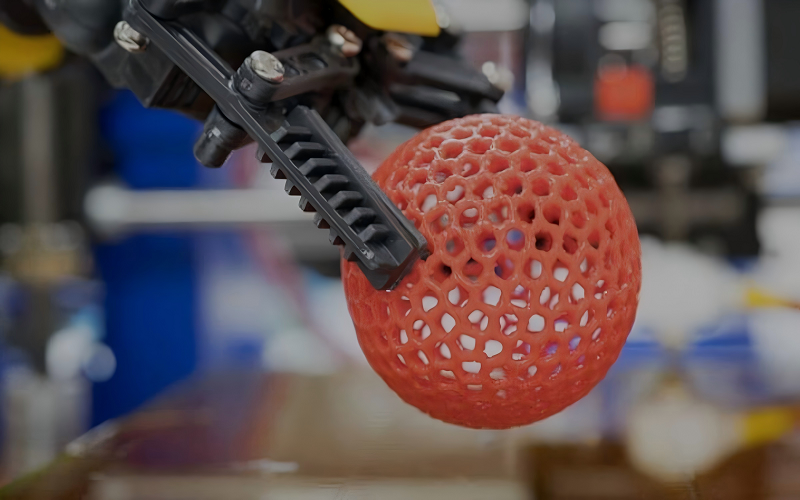
Does Delrin Break Easily?
Delrin is a very strong engineering plastic with high strength and rigidity, so it is generally not easy to break. It is well-suited for load-bearing applications, such as automotive components, machinery gears, and other industrial applications that require durable materials.
However, Delrin can break if subjected to large impacts or if the load exceeds its designed bearing capacity. It may also become somewhat brittle at very low temperatures, increasing the risk of breaking due to temperature sensitivity.
In general, as long as Delrin’s load-bearing capacity is considered during design and use, and its limits are not exceeded, it is unlikely to break easily. Proper design and application can ensure Delrin remains durable and reliable under various conditions, thanks to its excellent impact resistance and overall durability.
Is PTFE The Same As Delrin?
PTFE (polytetrafluoroethylene) and Delrin (polyoxymethylene) are not the same material. PTFE is a highly chemically resistant plastic that can withstand almost all chemicals, such as strong acids and strong bases, and is commonly used as a corrosion-resistant coating and sealing material.
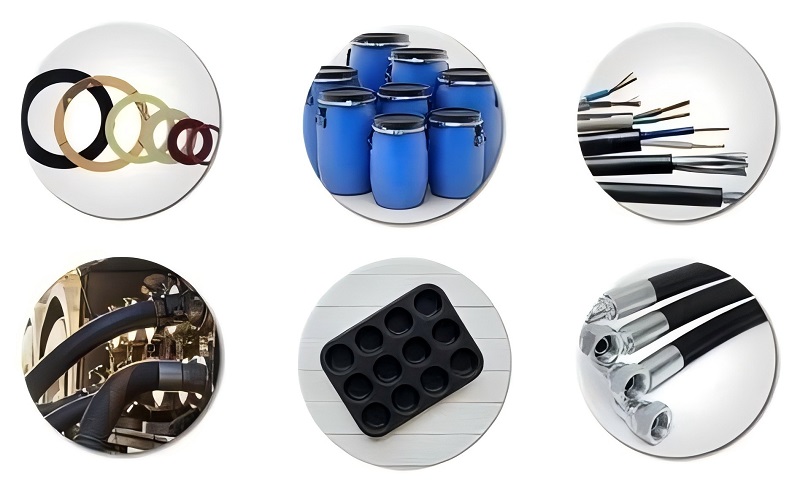
It has a low coefficient of friction and good electrical insulation, but has medium mechanical strength. In contrast, Delrin is a mechanically strong plastic and is suitable for applications that require wear resistance and low friction, such as automotive parts and medical equipment. Delrin has lower chemical resistance than PTFE, but has better strength and stiffness.
Overall, they vary greatly in performance and purpose.
| Property | PTFE | Delrin (POM) |
| Chemical Structure | Polytetrafluoroethylene | Polyoxymethylene |
| Density | 2.1 – 2.3 g/cm³ | 1.41 – 1.43 g/cm³ |
| Melting Point | 327°C (621°F) | 175°C (347°F) |
| Coefficient of Friction | Extremely low (0.05 – 0.10) | Low (0.20 – 0.25) |
| Thermal Stability | Excellent | Good |
| Chemical Resistance | Outstanding resistance to most chemicals | Good resistance to chemicals |
| Water Absorption | Very low (almost negligible) | Low (0.2% – 0.5%) |
| Mechanical Strength | Low tensile strength (~20 MPa) | High tensile strength (~70 MPa) |
| Wear Resistance | Excellent in low-load applications | Excellent |
| Electrical Insulation | Excellent dielectric properties | Good dielectric properties |
| Cost | Relatively high | More cost-effective compared to PTFE |
| Applications | Seals, gaskets, non-stick coatings, bearings | Gears, bearings, electrical insulators, automotive parts |
| Temperature Range | -200°C to 260°C (-328°F to 500°F) | -40°C to 120°C (-40°F to 248°F) |
What Is The Cost Difference Between Delrin And PEEK?
There is a big difference between Delrin and PEEK when it comes to cost. Delrin is generally inexpensive and is suitable for projects where performance requirements are not particularly high. Manufacturing costs are relatively high, but processing is simple, resulting in significant overall cost savings.
Relatively speaking, PEEK is much more expensive because it is a high-performance plastic that performs very well in extreme conditions. Although the initial cost is high, PEEK’s superior performance in applications such as aerospace and high-performance medical devices can lead to significant cost savings over time.
In short, if you have a tight budget and moderate performance requirements, Delrin is the more economical choice. If you need extreme performance and are on a budget, it may be worth paying the higher cost of PEEK.

